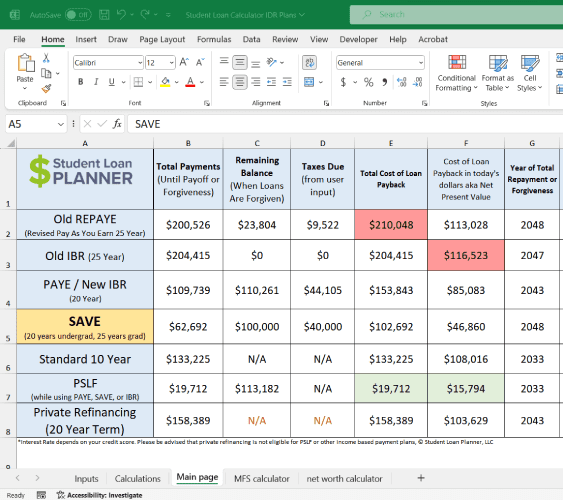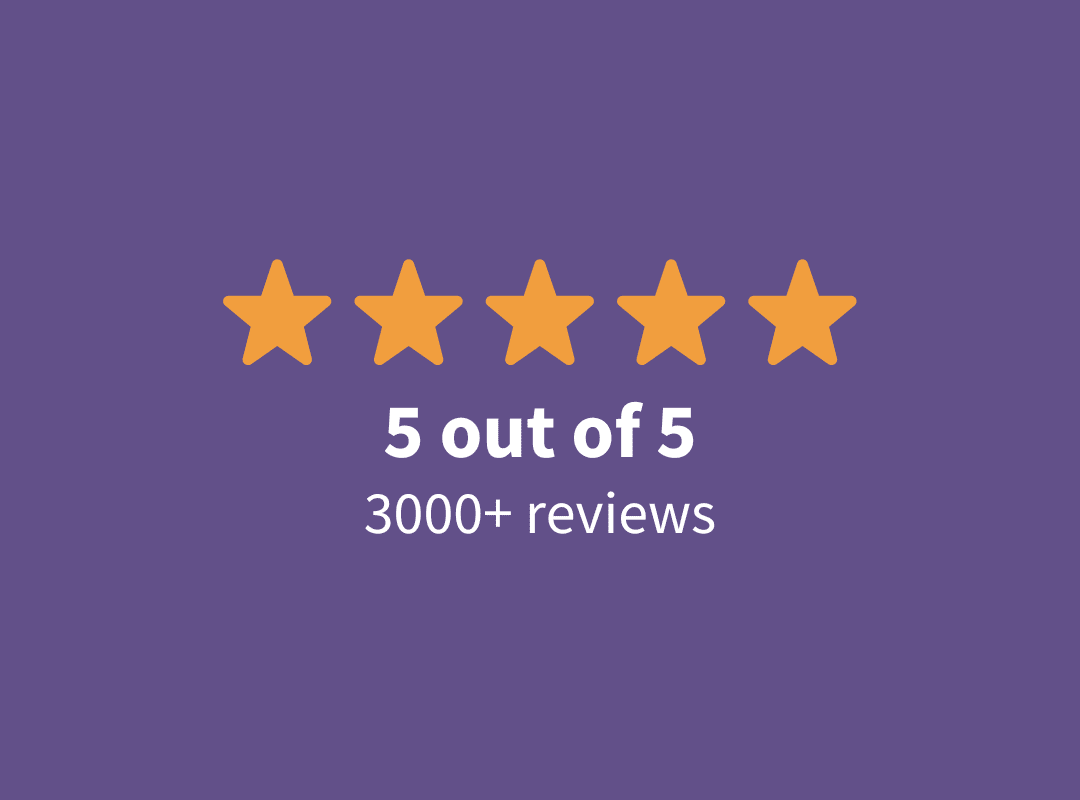
Key Takeaways:
- 1 in 16 survey respondents experienced suicidal ideation at some point due to student loans.
- Suicidal ideation has gone down, but only slightly.
- Despite efforts by the Department of Education and the Biden administration, 78.7% of respondents report being anxious because of student loans.
Federal student loan borrowers had a break from monthly payments for three years due to the pandemic. But now that student loan repayment has resumed so has the financial stress.
The Biden administration unveiled numerous initiatives to help ease the loan burden for borrowers during this transition. From launching the Saving On a Valuable Education (SAVE) Plan to implementing the IDR waiver and more, these changes were enacted to make student loan debt more manageable.
Despite these efforts, student loan borrowers are still depressed, anxious, and 1 in 16 are experiencing suicidal ideation, according Student Loan Planner’s most recent survey.
Student debt and mental health statistics
Student debt has an unquestionable impact on borrowers’ financial and emotional well-being. Over the years, we’ve surveyed readers about their relationship between student debt and mental health.
As of 2024, we found that 1 in 16 respondents experienced suicidal ideation at some point because of their student loans. In 2019, the first year of the survey, it was 1 in 15 and in 2021, 1 in 14 borrowers experienced suicidal ideation due to their loans. Although the rates of suicidal ideation have decreased, the change is negligible despite all of the student loan relief changes from the Department of Education.
Looking at student debt and mental health, respondents also felt a range of other emotions. The most common one is anxiety, with 78.7% of respondents stating they’ve experienced anxiety due to their student loan debt.
Additionally, 43.5% of respondents experienced hopelessness, and 41.5% experienced depression because of their student loans.
Depression and anxiety rates have dropped since 2019. From our 2019 mental health survey, 53% of borrowers experienced depression because of their debt, compared to 41.5% in 2024. Student loan anxiety rates stood at 90% in 2019 and are down to 78.7% in 2024.
While depression and anxiety rates are moving in the right direction, on their own, the numbers are still rather high. Also, the change in suicidal ideation over the years has been insignificant.
This is alarming, as people think of turning their life and debt into life and death. It means that the burden feels so great that many borrowers feel completely trapped, without many options.
Get Started With Our New IDR Calculator

Biden’s student loan debt relief efforts
Over the past few years, the Biden administration and the Department of Education have made several proposals and changes that benefit borrowers.
Student loan cancellation
In an unprecedented move, the Biden administration launched its plan to cancel $10,000 to $20,000 in student loan debt for eligible federal loan borrowers. What would have likely improved many borrowers’ financial health was struck down by the Supreme Court and never moved forward.
The launch of the SAVE plan
Shortly after, the Biden administration announced that the new Saving On a Valuable Education (SAVE) plan would replace the Revised Pay As You Earn (REPAYE) plan and come with a host of borrower benefits.
The SAVE plan aims to keep balances in check by offering an interest subsidy that covers any unpaid interest. Instead of increasingly growing balances, borrowers won’t have any unpaid interest tacked on as long as they’re making monthly payments.
SAVE also lowers monthly payments by boosting the income exemption to 225% instead of 150%. Additionally, payments are limited to 10% of discretionary income. In the summer of 2024, federal loan borrowers with only undergraduate loans will pay half of that at 5% of discretionary income.
While the SAVE plan introduces numerous benefits, some of them aren’t available until the summer of 2024. Two downsides of the SAVE plan are:
- There’s no monthly payment limit
- Graduate loan borrowers repay loans for 25 years instead of 20
It’s not ideal for borrowers with a high income and graduate loan borrowers will want to compare SAVE with PAYE, which has a 20-year repayment term, while the plan is available. PAYE is getting phased out in the summer of 2024.
PSLF and IDR waivers
In addition to these changes, there have been attempts at cleaning up some of the mess related to the Public Service Loan Forgiveness program. The PSLF waiver was a limited-time opportunity for borrowers to get credit for repayment periods that didn’t qualify under traditional PSLF rules. That ended on October 31, 2022.
Currently, the IDR waiver is in place until the summer of 2024. This one-time account adjustment allows some previous payments that didn’t qualify to count toward loan forgiveness. For example, monthly payments on other repayment plans may now count. Plus, some eligible periods of deferment and forbearance.
Through this benefit, borrowers may reach PSLF or IDR forgiveness faster. Others will see their loans forgiven automatically.
Targeted loan cancellation
The Biden administration has already discharged 1.2 billion dollars in student loans for 153,000 federal loan borrowers. Low-balance borrowers on the SAVE plan who took out $12,000 or less and made payments for 10 years qualified for this most recent bout of loan forgiveness.
Negotiated rulemaking
Biden’s proposed loan cancellation was struck down. In an attempt to provide alternative student loan debt relief, the Biden administration is holding negotiated rulemaking sessions proposing loan forgiveness options for borrowers experiencing hardship, according to a press release by the U.S. Department of Education.
The Fresh Start program
The Fresh Start program is available to borrowers in default for a limited time. Announced in April 2022 and ending on September 30, 2024, the Fresh Start program transfers your loans to a loan servicer and removes the default record on your credit report. You’ll also be put “in repayment” status and be eligible to apply for an income-driven repayment (IDR) plan.
Borrowers in default can go to myeddebt.ed.gov to get started.
Why isn’t this enough?
The Department of Education and Biden’s student loan debt relief initiatives are admirable and will make a tangible difference in the lives of many student loan borrowers. However, our student debt and mental health data from our latest survey show that despite all of these sweeping changes, 1 in 16 borrowers have experienced suicidal ideation at some point because of their student loan debt.
Suicidal ideation is “the act of thinking about or a state of preoccupation with taking one's own life,” according to Merriam-Webster.
According to the Centers for Disease Control and Prevention (CDC), “In 2021, an estimated 12.3 million American adults seriously thought about suicide, 3.5 million planned a suicide attempt, and 1.7 million attempted suicide.”
In other words, there are much higher rates of suicidal ideation relative to the act itself. The high rates of suicidal ideation for student loan borrowers may affect their overall well-being or exacerbate pre-existing mental health issues.
If these programs aren’t moving the needle forward in a significant way, what else can improve the mental health and financial stress of student loan borrowers?
Changes from loan servicers
Based on our survey data, many student loan borrowers are having frustrating experiences with their loan servicer. Ideally, loan servicers support borrowers on their repayment journey, simplify processes, and eliminate any confusion. But that’s not the case, by and large. Some changes that loan servicers can make to improve student loan borrowers’ experience and well-being include the following.
Accurate monthly payments
One of the more challenging experiences borrowers are facing is inaccurate monthly payments. Having incorrect payment amounts can cause financial stress and be burdensome for borrowers with no extra room in their budget.
Ensuring accurate monthly payments and describing in detail when and why payment amounts are changing would benefit borrowers.
One respondent noted, “No idea what my monthly payment is, I receive a letter every two weeks listing different amounts. Always receive inaccurate information when I speak to them.”
Improve customer service
Now that student loan repayment has resumed, a common complaint among borrowers is about the lack of customer service from loan servicers. There are lengthy hold times and inconsistent information from each representative.
A survey respondent explains, “I can never get a hold of anyone for PSLF help that understands the program and will help me. Wait times are too long and customer service is terrible.”
To improve customer service, there needs to be more customer service representatives to support borrowers and reduce wait times. Additionally, there needs to be standardized training so representatives are up-to-date with changes that affect borrowers.
Efficient processing
As part of our survey, the most common complaints about processing were around:
- Applying for the new SAVE plan
- IDR adjustments
- Setting up autopay
- PSLF applications
Borrowers complain about delays and months of processing trying to get on the new SAVE plan to access the generous benefits.
“Absurd level of incompetence. Took 4 applications to get on the SAVE program, multiple calls to get off imposed forbearance, the interest hasn’t been dropping off on SAVE plan. Had the nerve to tell me in a message that accrued interest doesn’t drop off and capitalizes. I’ve complained several times to Student Aid. It’s a nightmare. Four-hour wait to speak to a supervisor.”
Issues with setting up autopay have led to some payments being marked as late. Improving efficiency would make it easier for borrowers to access the plans proposed to help them.
Another borrower is stuck in limbo while waiting for PSLF forgiveness stating, “Haven't processed my PSLF application so I've had to stay at my horrible job instead of being able to resign. I'm too nervous to resign until I am officially forgiven.”
Student loans still a heavy burden on mental health
This is the third year of doing the Student Loan Planner Mental Health Survey. Although there’s been some improvement, it’s minimal relative to all the benefits and initiatives created to help borrowers. It’s clear that student loans are still a heavy burden for borrowers.
More changes are needed — overhauling the loan servicer system, efficient processing, accurate information, and support from customer service representatives are a start.
If you’re experiencing suicidal thoughts, please call 988.
Methodology
We surveyed 3,921 Student Loan Planner® readers from our email list. Fifty-nine percent of respondents have six figures of student loan debt and 85% earned more than $50,000 per year.
Refinance student loans, get a bonus in 2024
| Lender Name | Lender | Offer | Learn more |
|---|---|---|---|

|
$500 Bonus
*Includes optional 0.25% Auto Pay discount. For 100k or more.
|
Fixed 5.24 - 9.99% APR*
Variable 6.24 - 9.99% APR*
|
|

|
$1,000 Bonus
For 100k or more. $300 for 50k to $99,999
|
Fixed 5.19 - 10.24% APPR
Variable 5.28 - 10.24% APR
|
|

|
$1,000 Bonus
For 100k or more. $200 for 50k to $99,999
|
Fixed 5.19 - 9.74% APR
Variable 5.99 - 9.74% APR
|
|

|
$1,050 Bonus
For 100k+, $300 for 50k to 99k.
|
Fixed 5.44 - 9.75% APR
Variable 5.49 - 9.95% APR
|
|

|
$1,275 Bonus
For 150k+, $300 to $575 for 50k to 149k.
|
Fixed 5.48 - 8.69% APR
Variable 5.28 - 8.99% APR
|
|

|
$1,250 Bonus
For 100k+, $350 for 50k to 100k. $100 for 5k to 50k
|
Fixed 5.48 - 10.98% APR
Variable 5.28 - 12.41% AR
|
Not sure what to do with your student loans?
Take our 11 question quiz to get a personalized recommendation for 2024 on whether you should pursue PSLF, Biden’s New IDR plan, or refinancing (including the one lender we think could give you the best rate).

[…] have gotten help. I’ve read the stories of clients who had been dealing with depression (and even considered suicide) because of their student loans but felt their burden lifted after their […]
Hello, I am a 1L who is just starting law school this Fall semester. I have recently received financial awards for law school. I received Fed Dir Unsubsidized Stafford, Fed Direct GradPLUS Loan-Law, and a Need-Based Grant from the law school.
On my law school financial aid portal, I have selected the options to accept these financial awards. However, as I spoke to my parents, they have managed to find other sources of funds to cover my law school expenses, which is from within our own family/relatives. Initially, I thought I would need to accept the GradPLUS Loan-Law, which would provide me with ~$30,000/semester, now, my parents have secured the same amount of money from our family/relatives. Therefore, we believe that we do not need the GradPLUS loan going forward.
I will still accept the Stafford Loan.
If I choose to cancel my acceptance of the GradPLUS Loan-Law, just to clarify that I have not yet signed the Student Promissory Agreement, would there be any penalty? Would there be any consequences on the Stafford Loan that I accept?
Here is a list of questions that I have with regards to Fed Dir Unsubsidized Stafford and Fed Direct GradPLUS Loan-Law.
Questions for the Fed Dir Unsubsidized Stafford:
1.How much interest will I owe monthly, what is the rate of interest ? Assume I borrow $ 10,000 at the beginning of the semester of my first year.
· Will it be the same amount of monthly interest while I am in law school and still a student ?
· Will the monthly interest amount change each year while I am in law school?
· Will it still increase or decrease after I graduate and begin to pay installments until I can pay all the principal owed back?
2. For this kind of loan, is there any other cost beside interest cost? If there is, and assume I borrow $ 10,000, how much do I owe then.
3. Is there any grace period before I am obligated to install the loan when I am still a student? Will it extend for a few months after I graduate?
Assume I borrow $ 10,000,
· How much additional amount do I owe monthly for the first year?
· How much is the additional amount I owe at the beginning of the second year and the third year, respectively compared to a year before ?
· How much will I owe when I graduate?
4. If now, firstly I agree to take the Fed Dir Unsubsidized Stafford of $10,250 — but not ready yet to decide to use Fed. Direct GradPLUS Loan-Law— how much will I get in my account for my educational expenses since I have paid up the first semester tuition (from my parents’ source)?
5. Is there any time limit for me to take out all the funds sent to my account, or will it stay there until whenever I need to use it?
Questions for Fed. Direct GradPLUS Loan-Law:
1.How much interest will I owe monthly, what is the rate of interest ? Assume I borrow $ 30,000 at the beginning of the semester of my first year.
· Will it be the same amount of monthly interest while I am in law school and still a student ?
· Will the monthly interest amount change each year while I am in law school?
· Will it still increase or decrease after I graduate and begin to pay installments until I can pay all the principal owed back?
2. For this kind of loan (GradPlus loan), is there any other cost besides interest cost? If there is, and assume I borrow $ 30,000, how much do I owe then?
3. Is there any grace period before I am obligated to install the loan when I am still a student or will it extend for a few months after I graduate ?
Assume I borrow $ 30,000,
· How much additional amount do I owe monthly for the first year?
· How much is the additional amount I owe at the beginning of the second year and the third year, respectively compared to a year before ?
· How much will I owe when I graduate?
4. If I agree to borrow a GradPlus Loan $ 30,000, how much will I get in my account for my educational expenses since I have paid up the first semester tuition (from my parents’ source)?
5. Is there any time limit for me to take out all the funds sent to my account, or will it stay there until whenever I need to use it?
I hope my questions will be answered in a clear manner.
These are all excellent questions, and ones a consultant could address during a pre-debt consultation. I encourage you to look into a pre-debt consult.
Did you break down the survey by types of loans? I’d specifically like to know age 50+ demographically and those with Parent Plus loans. Thank you!
We didn’t break them down by types of loans. The 50+ age range generally has a mix of parent plus and student loans of their own.